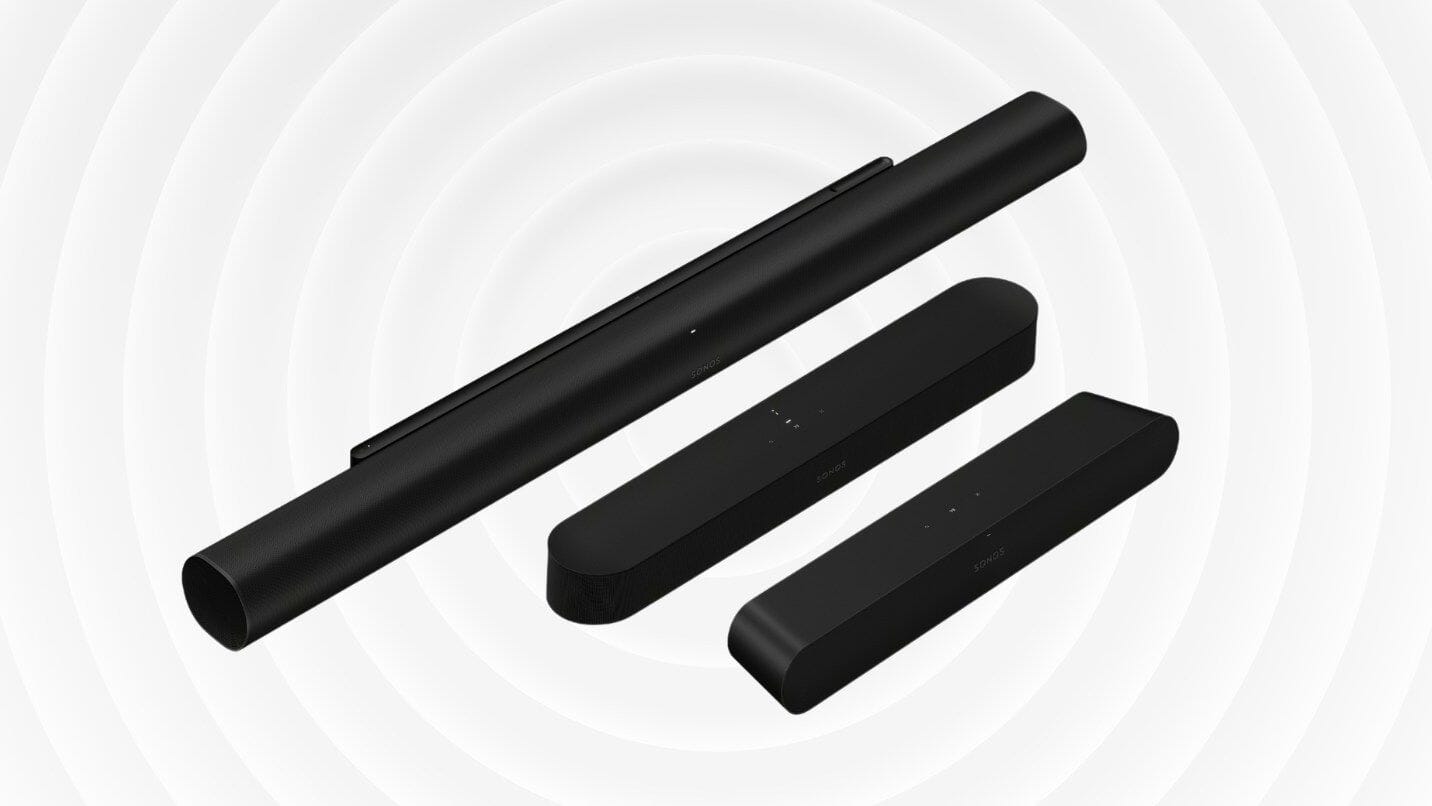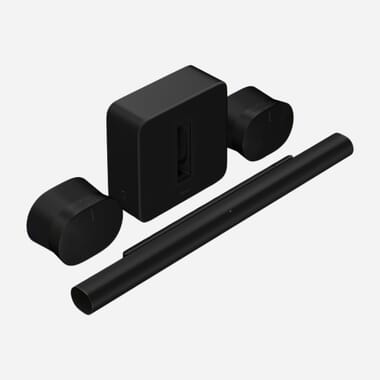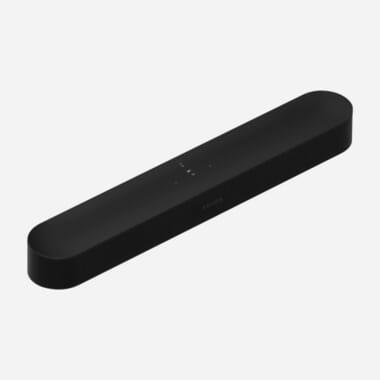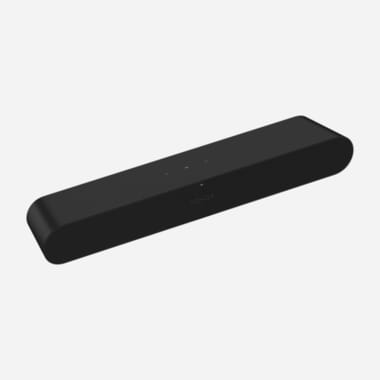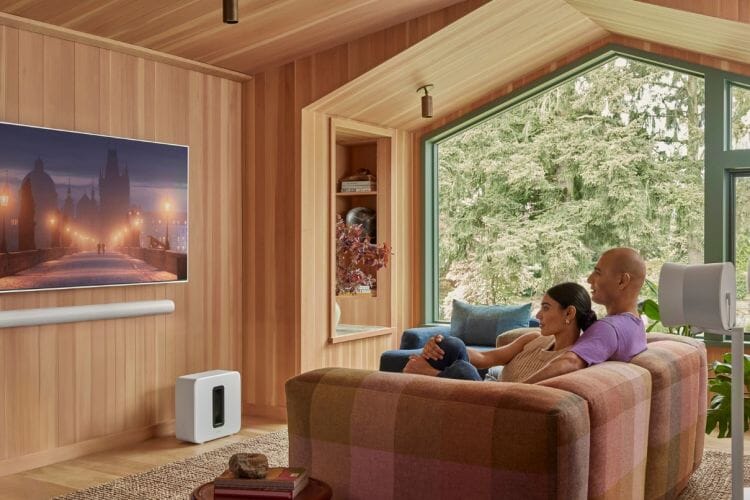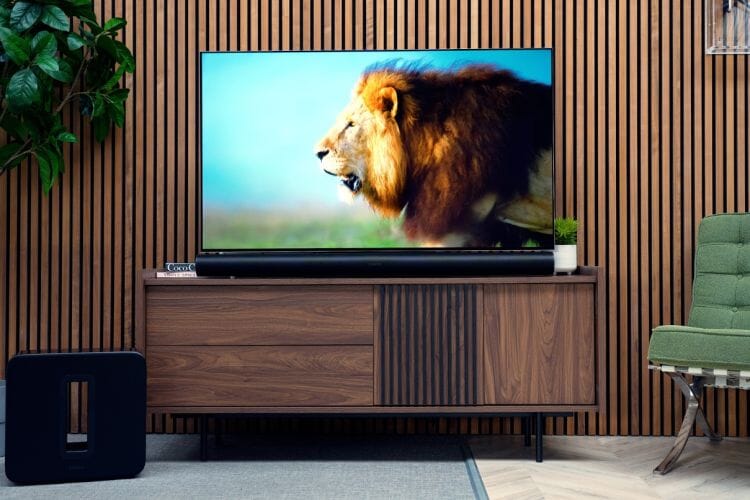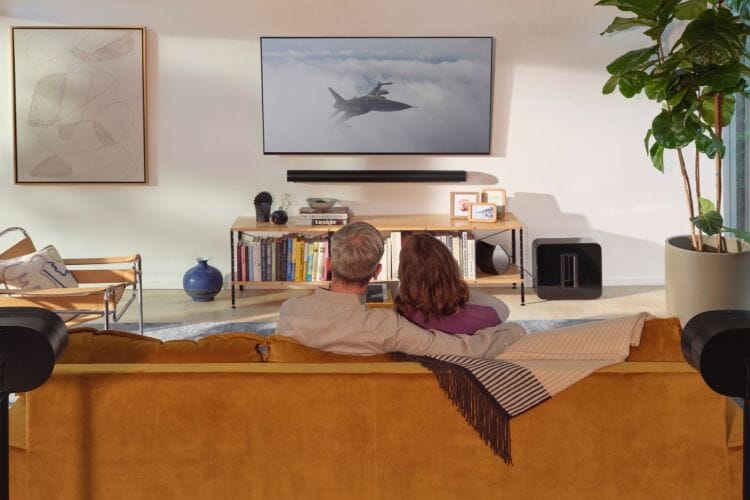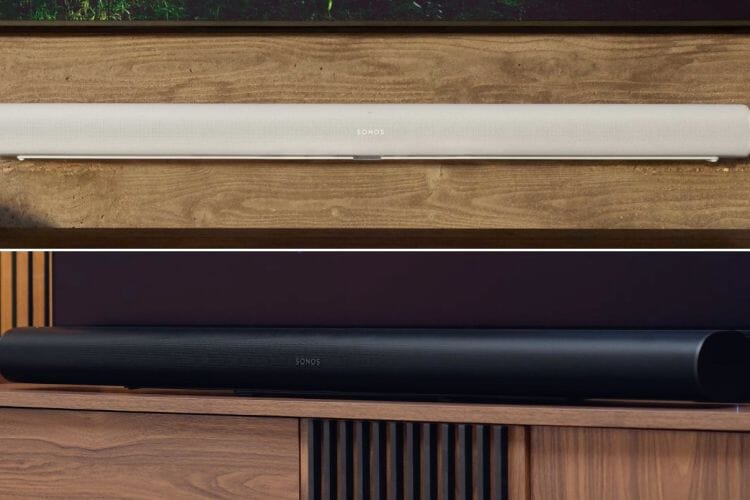Which Sonos Soundbar Should You Buy?
Choosing the right Sonos soundbar is the first step in building your ideal Sonos home cinema system. With three great options to pick from, it can be tricky to know which one is right for your space, your budget, and your future plans.
In this guide, we’ll compare the Sonos Ray, Sonos Beam (Gen 2) and Sonos Arc Ultra which offer a good, better, best lineup. To help you decide, we’ll cover key features, ideal room sizes, performance differences and expert tips.
💡 Not sure where to start with your Sonos Home Cinema? Check out our complete Sonos Home Cinema Setup Guide for an overview of soundbars, subwoofers and rear speakers.
Quick Comparison: Ray vs Beam (Gen 2) vs Arc Ultra
| Feature | Sonos Ray | Sonos Beam | Sonos Arc Ultra |
|---|---|---|---|
| RRP | £199 (see latest price) | £449 (see latest price) | £999 (see latest price) |
| Dolby Atmos | ❌ | ✔️ (Virtual) | ✔️ (True) |
| Upfiring Drivers | ❌ | ❌ | ✔️ |
| HDMI eARC | ❌ | ✔️ | ✔️ |
| Bluetooth | ❌ | ❌ | ✔️ |
| Voice Control | ❌ | ✔️ | ✔️ |
| Best For | Small spaces, second rooms | Medium-sized rooms | Large/open-plan spaces |
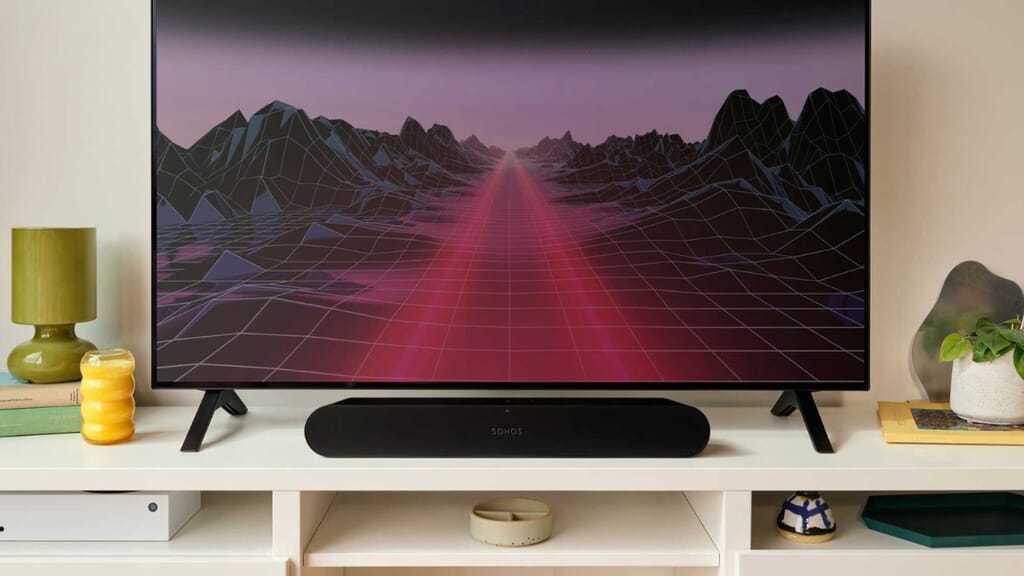
Sonos Ray - Compact, Affordable & Surprisingly Capable
At £199, the Sonos Ray is the most compact and affordable soundbar in the Sonos lineup. It’s ideal for smaller or secondary spaces - think bedrooms, gaming rooms, studies or small lounges. Generally speaking we recommend the Ray in rooms which are around 12m² or smaller depending on your listening preferences, room layout and how close you’re sat to the soundbar.
Despite being the entry-level option, the Ray still delivers clear dialogue and focused front-facing sound. It uses optical connection (no HDMI), and doesn’t support Dolby Atmos, but it’s still a solid upgrade on your TV audio.
Perfect if:
- You're working with a tight budget or smaller space
- You're looking for a neat fit in a media unit or shelf
- You want a simple upgrade from TV speakers
✅The Ray is a popular option as a gaming soundbar, and we often recommend pairing it with the Sonos Sub Mini for a small-space setup that still packs a punch. It's also a good pairing with older TVs which may only have an optical connection.
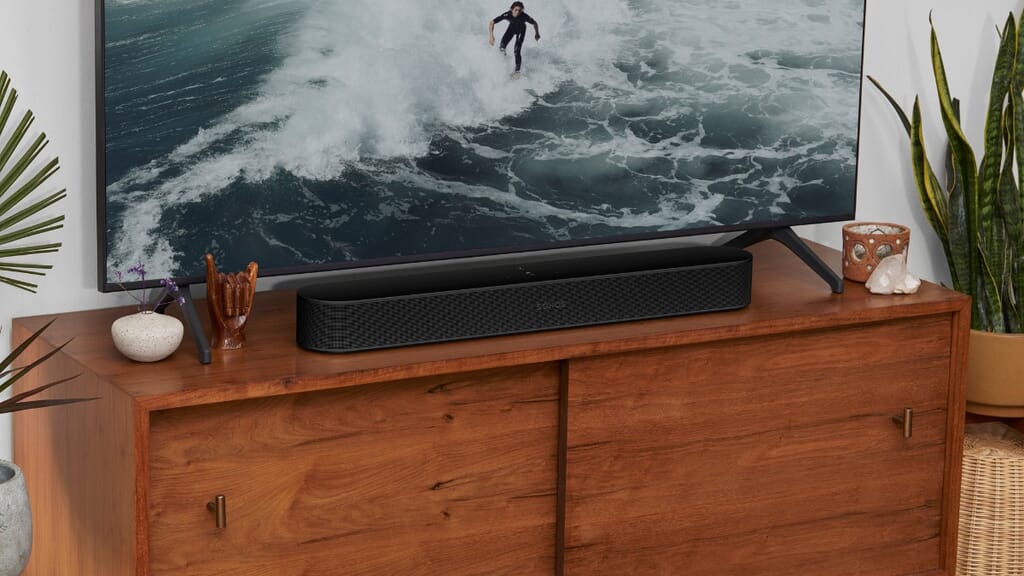
Sonos Beam (Gen 2) - A Great All-Rounder
The Beam (Gen 2) is arguably one of Sonos’ most versatile products. Priced at £449, it sits comfortably in the middle of the lineup, offering a big step up from the Ray while still keeping things compact. The Beam (Gen 2) is best suited to spaces between 12m² and 20m² - room and preferences dependent.
It supports Dolby Atmos using psychoacoustic processing and simulates height effects using clever driver placement and signal processing rather than physical up-firing speakers.
Sonically, it’s a big upgrade from the Ray. It offers angled side drivers for a wider soundstage, excellent centre channel clarity for crystal clear vocals and can unlock a better audio performance with HDMI eARC. The Beam (Gen 2) also offers voice control with built-in Amazon Alexa, Google Assistant and Sonos Voice.
Perfect if:
- You want Atmos performance without going full premium
- You want something that's compact but still packs a punch
- You have a TV that's 55" or smaller
✅ The Beam (Gen 2) is often referred to as the “sweet spot” in the range - offering a great balance between price and performance. Plus you can expand with a Sonos Sub Mini and/or rear surround speakers.

Sonos Arc Ultra - Flagship Soundbar, Premium Performance
The Arc Ultra is Sonos’ premium soundbar designed for larger lounges and open plan spaces, or for those who want the full Sonos cinema experience at home. The Arc Ultra is generally best suited to spaces roughly 20m² and bigger.
At £999, it’s a big jump in price, but the Arc Ultra delivers the most expansive, detailed and powerful sound in the range. Unlike the Beam, the Arc Ultra features dedicated up-firing and sideways firing drivers. That means when a plane flies overhead in a movie, the Arc Ultra can make it feel like it’s passing directly above you.
It also features a Sound Motion woofer for deep, controlled bass (even without a sub), plus it’s the only Sonos soundbar to offer Bluetooth connectivity and offers more extensive control over Speech Enhancement. Learn more about the Sonos Arc Ultra's Speech Enhancement feature.
Perfect if:
- You want the most immersive experience possible
- Your TV is bigger than 55"
- You have the space to accommodate the soundbar without blocking any of the drivers
✅ Even without a sub, the Arc Ultra delivers impressive low-end - but pairing it with the Sonos Sub 4 and Sonos Era 300 rears takes it to a whole new level.
Not sure where the original Sonos Arc comes into play in this lineup? Check out our Sonos Arc Ultra vs Arc: Should you upgrade? to find out the key differences.

How To Choose The Right Sonos Soundbar
When comparing Sonos soundbars, there are three key things to consider:
1. Your room size and TV size
- Ray: Best for compact rooms (under 12m²) and smaller TVs
- Beam (Gen 2): Great for medium-sized spaces (12m² - 20m²) and TVs under 55"
- Arc Ultra: Designed for larger rooms and open-plan spaces (>20m²) and TVs over 55"
2. Your budget
- Ray: Great for keeping costs low
- Beam (Gen 2): Balances features, performance and affordability
- Arc Ultra: Come with a more premium price tag to match the premium performance
3. Your future plans
Sonos is a modular system which runs wirelessly over WiFi which means you can add to your system over time. If you might want to expand your system further down the line, then prioritise the soundbar right now. But, if you’ve got a set budget and want to get the most for your money, a bundle could be a smart option.
Want to learn more about Sonos bundles? Check out our Best Sonos Home Cinema Bundles for Every Budget
Sonos Soundbar Top Tips: Maximise Your Setup
Once you have your soundbar setup, we’d recommend running Sonos’ room optimisation software, Trueplay Tuning. This will detect the space your soundbar is in and make small tweaks to help it perform best. You can also make EQ adjustments for the soundbar in the Sonos app.
Night Mode and Speech Enhancement are two settings you can toggle on/off in the Sonos app. Night Mode helps reduce louder crashes and bangs when watching late at night while Speech Enhancement gives the dialogue a boost to make it easier to follow along.
When watching Dolby Atmos content via the Sonos Beam (Gen 2) or Arc Ultra, you can check for the Dolby Atmos logo in the Now Playing screen in the Sonos app so you know you’re getting the right format.
🔧 We cover all of this and more in our Sonos Soundbar Top Tips guide.
Final Thoughts
Choosing the right Sonos soundbar is about more than just price — it’s about how you listen, where you watch, and what kind of experience you’re building. Whether you're starting simple or building a full system, Sonos makes it easy to grow your setup over time.
Other Useful Content
Blog: Best Sonos Home Cinema Bundles For Every Budget
Blog: Complete Sonos Home Cinema Buying Guide
Blog: Sonos Sub Mini vs Sub 4 - Which Sonos subwoofer should you choose?
Blog: Sonos Arc Ultra Review: The Dolby Atmos Soundbar to Beat?
Blog: Sonos Beam (Gen 2) Review: Is it worth it in 2025?
Blog: Our Comprehensive Sonos Ray Review
For more information about Sonos or any other products, get in touch and one of our Tech Guides would be happy to help!
| info@smarthomesounds.co.uk | |
| Live Chat on our Website | |
| 0800 677 1100 |
Why buy from Smart Home Sounds? We offer Lowest Price Guarantee, Free Next Day Delivery* and 0% Finance Available. Looking for more personal advice? Contact our team of experts today. Shop Sonos



